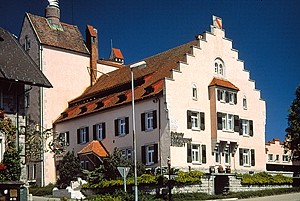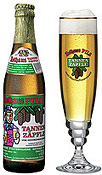The little brewery that could
… but doesn’t want to. A tale from the Black Forest in Germany.
 Once upon a time, in 1791, to be exact, some Benedictine monks in the Black Forest decided to wean the folks in the nearby village off their beloved Schnapps (brandy). Folks were just drinking too much, and often things got out of hand. They were good people, hardworking mountain folk, who lived a short, harsh life logging, farming and making charcoal, deep in the Black Forest. So the Schnapps they made, their moonshine, was the only distraction, the one thing that made life seem a little less harsh. Yet, they drank too much, and the Schnapps also contributed to the shortness of many a man’s life.
Once upon a time, in 1791, to be exact, some Benedictine monks in the Black Forest decided to wean the folks in the nearby village off their beloved Schnapps (brandy). Folks were just drinking too much, and often things got out of hand. They were good people, hardworking mountain folk, who lived a short, harsh life logging, farming and making charcoal, deep in the Black Forest. So the Schnapps they made, their moonshine, was the only distraction, the one thing that made life seem a little less harsh. Yet, they drank too much, and the Schnapps also contributed to the shortness of many a man’s life.
So the monks decided that their best chance of cutting down the consuption of Schnapps, was to offer a more nutritious beverage: beer. Monks had been brewing in Germany for as long as any one remembered, and it was a natural thing to suggest for these Benidictine brothers. And so they started the brewery “Am Roten Haus” (The Red House) in Grafenhausen. At roughly 1000 Meters (3000 feet) altitude, it is today the highest brewery in Germany. In 1806 , the brewery became the property of the Grand-Dukes of Baden, and after WWI, the brewery was state-owned.

So Rothaus was the mountain beer, and it had (and has) a very provincial image. They have not changed the label design in 30 years! So when I read in the Spiegel Online that Rothaus has become somewhat of a “cult beer,” I almost dropped my laptop. Apparently, about 100 bars in Berlin sell Rothaus beers and it’s the second most popular beer in Cologne. They just cannot brew enough to satisfy demand. And yet, they don’t even advertise aggressively. I mean it’s great beer. The Tannezäpfle is one of the best Pilsener beers in Germany. But it’s not a hip, sexy beer. Its image is downright boring and provincial.
So are the folks at the brewery excited about all this attention? Do they have plans to expand to fill the demand? Come up with a clever marketing strategy? No. They are quite dubious about this. Their little brewery is just fine the way it is – thank you very much.
Actually, the reasoning is more like this: if they expanded they’d have to buld a new brewery in the valley and they would loose the connection with the community of Grafenhausen. They also might loose the image of the little country brewery, which is a big part of the brand appeal to city folk. And the seven springs where they draw the water can only produce so much water – yet the quality of the water is a huge aspect of quality of the final product.
So what to do? Well, it’s really not that big a deal: brew a decent beer, take care of the local market (90 percent of the beer is still consumed within the state of Baden Württemberg), and see if there is some left over for the city slickers up north.
Nome net huodla, gell! Gsundheit!
January 30th, 2007 at 3:16 pm
I too saw the Spiegel article and became very excited about this beer. Unfortunately, I live in Chicago and won’t be able to try it until I go to Germany this summer. The great thing about Germany, unlike the US, is that the local/regional breweries are of the highest quality and taste and need to be tried for any beer junkie out there. I cannot wait for my trip to try this beer.